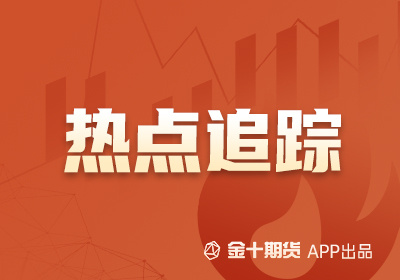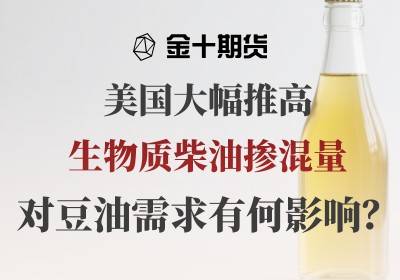In the early trading of April 18, the main domestic futures contracts rose and fell mixed, and crude oil futures led the futures market, SC crude oil rose by more than 2%, low-sulfur fuel oil rose by nearly 2%, and fuel oil rose by more than 1%. In terms of declines, polysilicon continued to lead the futures market, with glass, coking coal, coke, alumina and other varieties leading the decline. Recently, Shanghai Gold, which has attracted much attention from the market, opened slightly higher and then fell slightly, and overall declined slightly.
Polysilicon continues to hit a record low, how much space is left below?
From the perspective of spot prices, polysilicon has fallen steadily. According to SMM statistics, the quotation of polysilicon compound feedstock is 35.00-37.00 (0.00) yuan/kg; polysilicon dense material is 34.00-35.00 (0.00) yuan/kg; polysilicon cauliflower material is 31.00-32.00 (0.00) yuan/kg; granular silicon 33.00-35.00 (-1.00) yuan/kg, N-type material is 39.00-45.00 (0.00) yuan/kg, n-type granular silicon 38.00-39.00 (0.00) yuan/kg.
From the perspective of inventory, polysilicon manufacturers have decreased inventories, and silicon wafer inventory has also decreased significantly. According to SMM statistics, polysilicon inventory is 24.40, a month-on-month change of 3.39%, silicon wafer inventory is 19.15GW, a month-on-month change of -8.37%, polysilicon production is 21,700.00 tons, a month-on-month change of -6.00%, and silicon wafer production is 13.47GW, a month-on-month change of -0.50%.
As early as last week, polysilicon began to decline, and several institutions pointed out on Monday:The rapid decline in polysilicon futures is due to the rapid downward trend of terminal components installation. In addition, the decline in electricity prices and the collapse of raw material industrial silicon prices have led to a decline in polysilicon production costs, which is also one of the reasons for the current decline in polysilicon prices.. At that time, regarding the future trend, Guosen Futures believed that the later trend of polysilicon price was not optimistic and recommended short selling when it rebounded; Everbright Futures also held a bearish view, "polysilicon gradually entered a stage of supply and demand imbalance, and there is pressure to continue bottoming out"; CICC Wealth Futures also showed that the short-term silicon price trend was weak. ()
To this day, most institutions have maintained their previous views unchanged. Everbright Futures still believes that polysilicon is gradually entering a stage of supply and demand imbalance and there is pressure to continue bottoming out. Specifically, there are news of production cuts in major Xinjiang factories, which are relatively limited in strength and have not triggered market rebound sentiment. The supply and demand of industrial silicon have both decreased, and the fundamentals are not good enough. We continue to consolidate weakly. We still need to pay attention to the trend of subsequent production cuts. The downstream delivery cycle of polysilicon is extended. After the 430 rush to install, demand gradually moves closer to weak expectations, silicon wafer production has declined, and negative price feedback has begun to conduct upwards.
Guosen Futures also maintains a bearish view: on the supply side, the weekly output of polysilicon hovers at a low level, and the operating rates of various companies remain at a low level. The price of downstream polysilicon silicon wafers has fallen, and the destocking speed has slowed down; the production profitability of battery cell companies is good, and the operating rate of enterprises is rising; the price of components weakens, and the company gradually increases the operating rate, but the number of orders is poor. The fundamentals of polysilicon begin to weaken, inventory is at a high level, and the price is relatively short.
However, Huatai FuturesHave a different view, and pointed out that on the supply side, Sichuan production areas may resume production. Relying on the advantage of electricity price, cost support may move downward. On the demand side, as the "531" policy window approaches, downstream production scheduling demand slightly exceeds production scheduling, and inventory is expected to decrease slightly. With the approach of the rush installation window and the end of some component procurement projects, the market shows a situation of double increase in warehouse volume. On the other hand, the decline in prices has led to some enterprises reducing their willingness to register warehouse receipts, which may intensifyScarce warehouse receipts before delivery provide support for bullsAt present, the price manufacturers are willing to register warehouse receipts, and the warehouse receipt game is still there. If the 06 contract falls sharply, you can choose the opportunity to place long orders at low prices.
Regarding the future market trend of upstream industrial silicon, institutions believe that the focus is whether large manufacturers will further reduce production. Specifically, GF Futures believes that even if large enterprises cut production, supply is still oversupply, inventory accumulation continues to accumulate, and spot prices are under pressure and falling. Although large enterprises have implemented production cuts, new production capacity has been put into operation in Yunnan, some small hydropower enterprises in the southwest region resume production, the operating rate in the northwest region has increased, and supply reduction has narrowed. Forefront demand expectations are not optimistic, and it is difficult to fully absorb the current high supply of industrial silicon. The increase in inventory has led to pressure for price downward adjustment. If large enterprises further reduce production, the inventory will be reduced, and the center of gravity of industrial silicon prices may move upward, but with the concerns about the resumption of production by enterprises in the southwest region, the price upward space is limited. Jinyuan Futures also pointed out thatWe need to pay attention to the production trends of major manufacturers in the future, If large manufacturers further reduce production, it may drive industrial silicon prices to stabilize.
Crude oil prices rebounded sharply from locations last week. Can we still catch up with more in the future?
The main contract of SC crude oil continued to rebound after hitting a multi-year low of 444.0 yuan/barrel, and once rose to 496.8 yuan/barrel, a low of 52.8 yuan/barrel, an increase of 11.89%. Oil prices have risen sharply recently for two main reasons: concerns about future supply and optimistic expectations that U.S. tariff negotiations are expected to reach market sentiment.
Specifically, on the supply side, the market's concerns about supply are aggravated by Trump's increased pressure on Iran's energy exports and the previous Trump releases the latest policy to sanction the so-called overseas "tea pot" refineries; in addition, OPEC documents show that the receipt of the latest compensation plan for the excess oil production by all its oil-producing countries, including additional voluntary adjustments, has also boosted market sentiment. In terms of tariff negotiations, the United States' negotiations with several major trading partners have brought optimistic expectations of reaching an agreement. Trump said he is confident of reaching a trade agreement with the EU, and the negotiations between the United States and Japan have further enhanced the market's expectations for reaching an agreement and avoiding the most serious impact of tariffs. However, Everbright Futures remindsThe current oil price rebounded nearly $10 per barrel from its low last week. In the short term, we need to pay attention to the risk of oil price correction.. Southwest Futures also believes thatBreast oil prices will be suppressed by $70 and $75。
CICC Wealth Futures also pointed out thatCrude oil pulsed short-term rise is usually unsustainableEven though sanctions against Iran may result in supply losses of about 1 million barrels per day, it also leaves room for OPEC's production increase policy. Compared with the idle production capacity of millions of barrels per day, Iran's potential gap is not difficult to hedge. Therefore, we do not make presets about geopolitics and take one step at a time, while economic downturns and weak demand have effectively suppressed the sustainability of the rebound in oil prices.
“Higher pressure on oil prices. "Galaxy Futures analysis pointed out that there are signs of easing in tariff conflicts, macro sentiment has improved, coupled with frequent positive bulls on the crude oil supply side, oil prices rebounded strongly. However, considering the uncertainty of Trump's policy, market changes will still be frequent in the future. In the medium term, crude oil fundamentals were running weakly in the second quarter, and the problem of slowing demand growth in the medium and long term cannot be falsified. The main operating range of Brent is expected to be between US$60-68/barrel.
Jianxin Futures said that under the background of the trade war, the market's expectations for crude oil demand are relatively pessimistic.Oil prices are unlikely to have room for a trend to rise, and is very susceptible to large fluctuations in the news. You can consider buying call options and stop profit in time. SC is affected by sanctions and the trend is relatively strong.
Why does the rise in coke cannot boost futures prices?
Although the previous coke main contract showed a short-term rise with the first round of coke rising, it has now resumed declines; coking coal has maintained its decline, and today is the sixth consecutive trading day, approaching the 900 mark.
Regarding the rise in coke, Haitong Futures Analysis pointed out, "The market is conservative about the second round of coke increase". Although the increase was successfully implemented, the sentiment of the double-coke market has not improved significantly. With the impact of tariff issues on future demand for steel, the overall market confidence of the black system is insufficient, and the blast furnace iron and water production of steel mills is still recovering. The demand for coke is strengthening, and there is no major contradiction between coke supply and demand. However, since the steel market is generally pessimistic due to future market demand, steel mills are limited in their enthusiasm for raw material procurement.
Regarding the future market, Shenyin Wanguo Futures said that overall, the performance of terminal steel demand was lower than expected.Under the expectation that iron production will decline, the double-focal price is under pressure above, pay attention to the continued situation of high-level iron production. Haitong Futures said that the current impact of macro news on market uncertainty is still undermining the impact of coke contracts.The main coke contract is more likely to follow the market fluctuations。
Can glass keep the 1100 mark?
Since late October last year, glass has been showing a volatile downward trend, and has now fallen by nearly 30% from its October high of 1,603 yuan/ton to 1,135 yuan/ton.
Data released by Longzhong Information on Thursday showed that as of the week of April 17, the total inventory of float glass sample enterprises nationwide was 65.078 million heavy boxes, a decrease of 125,000 heavy boxes month-on-month, a decrease of 0.19%, and a year-on-year increase of 9.94%. The inventory days were 29.2 days, the same as the previous period. The production end of the float glass industry is basically stable. This week, the average operating rate of the float glass industry is 75.66%, an increase of 0.24% month-on-month, and the average capacity utilization rate is 79.03%, which is the same month-on-month. The national floating glass production is also flat at 1.1093 million tons.
Southwest Futures analysis pointed out that the current inventory in the glass industry chain is mainly concentrated in the hands of upstream glass factories, and the inventory destocking speed is slow and the marginal slowdown.If there is no substantial favorable fundamentals, low prices do not constitute sufficient conditions for stopping the decline, and glass prices may continue to fall.. It is recommended to hold the glass FG509 contract in advance, lower the closing line, and lock in part of the profit in advance.
Industry losses have increased, alumina prices have stopped falling and stabilized
Alumina rebounded after falling to a record low of 2,663 yuan/ton. Galaxy Futures believes that the current tariff situation is still bad for electrolytic aluminum in general. With the decline in overseas transaction prices, the import window of alumina has been temporarily opened. It is understood that market-oriented imports of alumina will arrive in Hong Kong in late 2018. marketThis week there have been constant rumors about the supply of individual mines at the Guinea mine, but it has not affected the continued decline in bauxite transaction prices.. On the supply side of alumina, there is elastic production, planned maintenance until the end of the month or the resumption of production is still uncertain, but the new investment is progressing normally, and the opening of the import window has led to an increase in import volume. It is expected that there will be no substantial production cuts and the scale is limited to change the pattern of oversupply and demand for alumina. In addition, a large number of warehouse receipts will expire in July, and the spot market will be under great pressure.
















No comments yet